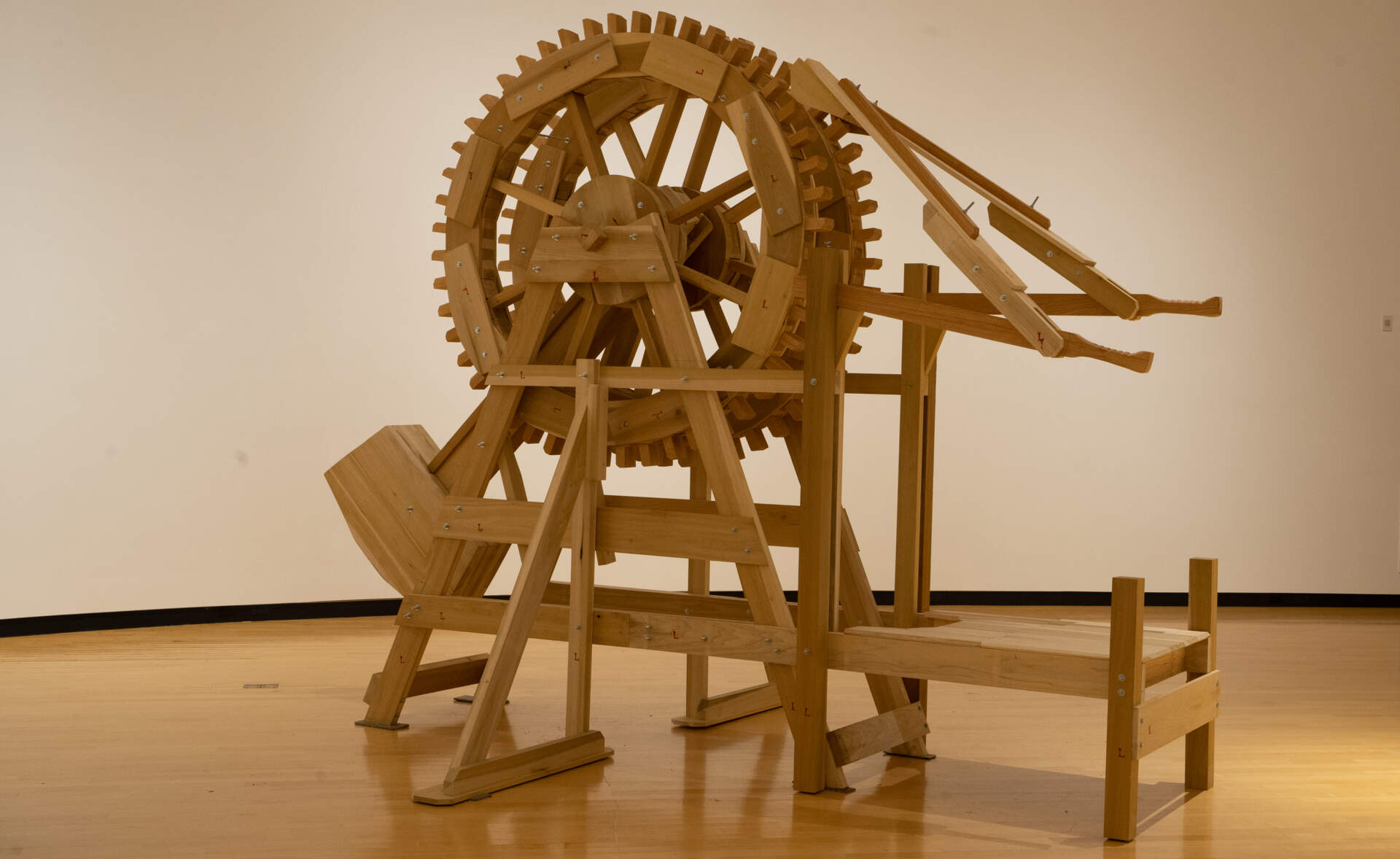Frederick Wright Jones The Devil is in the Detail
2020
wood, bolts, screws 120 x 144 x 120 inches
10 ft x 12 ft x 10 ft
Courtesy of the artist
Work Statement: The Devil is in the Detail
The American melting pot is not a place of Benetton-like harmony. Rather, this cooking process is a reworking of social antagonisms and the reconstruction of historical narratives. Growing up as a light-skinned African American in rural Pennsylvania and living as a foreigner in Europe has made me comfortable in the role of the outsider, seeing the world and society with alien eyes. My objects and installations work at the crossroads of function, ritual, and play. I want these works to engage the audience into performing, shifting from spectator to collaborator. I play with the distinction between contemplative versus habitual interactions. The habits and systems of belief at work in Western artistic presentation inspire me to question the distinction between folk and high art. I appropriate the visual language of those who did not write history, of merchandising, toys, underground comics, or utilitarian objects, to create a collage of tools, totems, and populist propaganda. My ethical stance hovers between dutiful responsibility and post-punk cynicism.
Wooden gears, cranks, and frames play with notions of work, exercise, and power in my current work. I am inspired by the raw functionality of Pennsylvania water-powered grain mills and the inversed role of tools of labor in Cross-Fit body sculpting. Early industrial Pennsylvania flour production was tied to colonial economies through a present and growing global marketplace. Flour was exported from Quaker, abolitionist Pennsylvania to feed enslaved people being worked in the Caribbean production of sugar and tobacco. Globalism is not a new phenomenon and local actions cannot be separated from money exchange or exploitation at the other end of the earth. Myths of personal gain, societal benefit, and exploitation are at the base of our contemporary view of history, identity, career, liberty, entertainment, health and strength. The black body remains a commodity. It is the site where our history of stolen physical labor meets our modern escapist needs for exercise and entertainment, where enslaved people meet professional athletes. This crossroad is where our uncertainties—laid bare by complicity in the wearing down of peoples, bodies and life—meets our responsibility for a more just society. Both ask each other where they come from and where they go. This is a place to meet and confront the devil.
-Frederick Wright Jones, Artist
_____________________________________________________________
A familiar form from the “good old days'' of American industry, the Devil is in the Details is a reproduction of the many water-powered flour mills that populated rural Pennsylvania in the 18th and 19th centuries. These mills were part of an early industrial system in which grain and flour commodities, produced in abolitionist, Quaker Pennsylvania, were destined for the Caribbean, where enslaved peoples were worked in the agricultural production of tobacco and sugar.
Global markets, and the distance between them, provide a troubling veil of abstraction, obscuring some of the violence embedded in those dynamics.
The artist’s rendition shares a particular end goal with its many predecessors–the maker’s design serves to make it functionally viable. Jones’ self-annihilating Skullcrusher (an earlier working title) confounds the productive purpose of such a tool and makes clear the immediacy in the cause-effect relationship between production and destruction.
-Rebecca Wing, Making Strange Co-Curator
